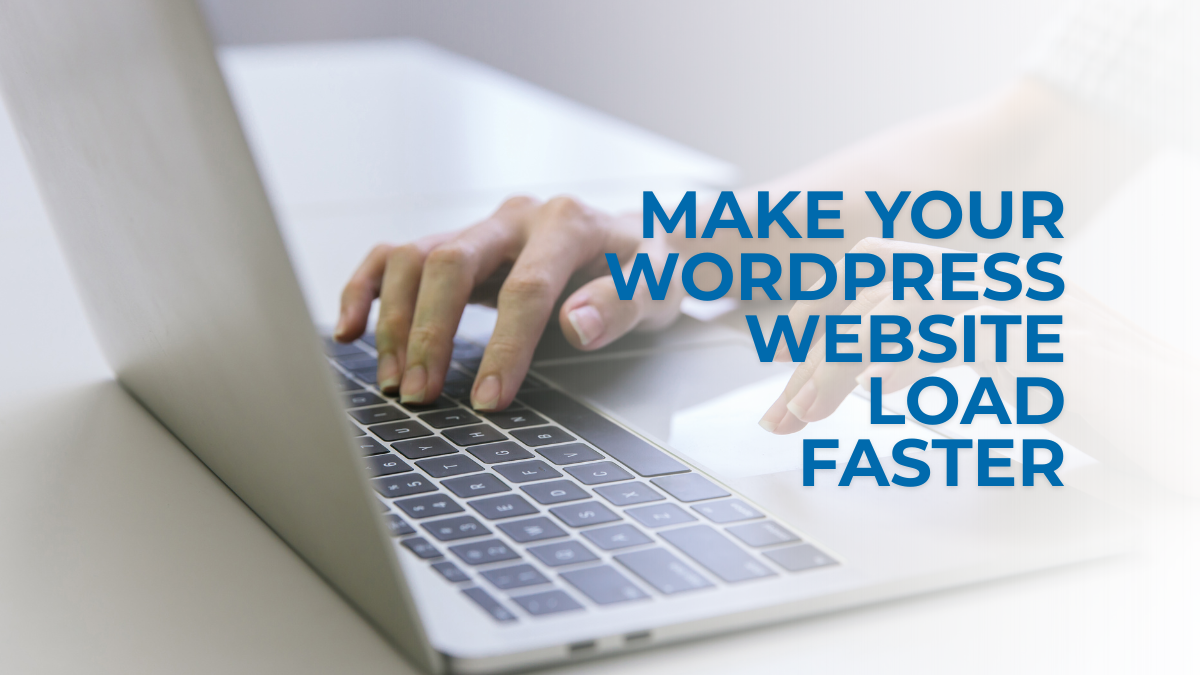Make Your WordPress Website Load Faster
Ensuring your WordPress website loads fast is essential. Think about it: have you ever gone to open a website, and the little circle on the page just kept spinning? If you are one of the very few who waited for the page to open, was it worth the wait?
Oh, wait, were you one of the impatient ones too?
In today’s mobile market, speed is a crucial factor, as slow-loading websites can hurt key aspects such as customer experience, sales, and even search engine rankings. The steps you might take to improve the speed at which your webpage opens in a browser window are also called Speed Optimization.
Why You Should Consider Website Speed Optimization
Times have changed. Back in the late ’80s, when the internet was a relatively new concept, I remember people being excited to see their business online and seeing the web as an opportunity to reach people in a new way. Not anymore. Nowadays, consumers expect a company to have a website. With the increase in online competition, every second counts.
According to a 2018 study by Google, over 50% of cell phone users immediately turn away from a website that takes 3 seconds or longer to load. This data confirms that a fast-loading website creates a better user experience for your visitors. The last thing you want is a potential customer finding your slow-loading website on Google, becoming frustrated, and moving on to the following result – your competitor’s site!
Additionally, site speed has become an essential factor in how search engines (like Google and Bing) rank your website in their search results. The slower your website loads, the more likely it is to be pushed further down the search engine results list, ultimately leading to fewer people finding your business and impacting your sales opportunities.
Everyday Things That Can Slow Down Your Website
With web technology, multiple operations can be running in the background, both on your web files and your server space, which can cause a web page to load slowly. Some of the more common things I have encountered include:
- Images and video files stored on the web page that are too large to load quickly.
- Poor programming within pages, themes, or plugins.
- Inefficient server operational space, memory, or functional settings.
- Pop-up advertisements run in the background.
- Unwanted malicious code added by attackers.
- Even some CMS Systems used for web development, like WordPress, function differently and, unless properly maintained, can perform slowly.
What to Do to Fix Your Website Speed
From the consumer’s perspective, it is often impossible to identify the problem just by looking at your website. It could be one or a combination of items working simultaneously that cause an issue. Sure, the speed tools available online will readily give you a list of things wrong. Still, unless you are a programmer and know how to find the things recommended to fix, most business owners find it too challenging to tackle on their own. For this reason, I recommend saving yourself the time upfront and investing in working with a skilled technical web developer, someone comfortable with accessing server files and making coding changes on the back end.
That said, the person you may have hired to design your website may not necessarily be skilled with the technical knowledge that you need to resolve the problem. Many web designers are creatively talented individuals experienced in digital graphic arts who use less technical systems, such as WordPress or Squarespace, to create a website for your business. Still, they often lack the technical skills to really “lift the hood,” so to speak, and know what to look for or make adjustments in the programming code. To be safe, I certainly recommend starting with the person who created your website ask them if they have the skills to do the job. They may be like me – someone who started creative and transformed into someone with technical skills because it was necessary for growing my company.
If they are not, or if you are a DIY business owner learning as you go, I suggest reaching out to someone skilled in Site Optimization to determine what’s going on with your website and avoid potential problems. I say this with technical experience – it can get complicated to take care of everything necessary to get a good rating.
Here are Simple Fixes To Get You Started
Better Manage Your Image Sizes
Keeping your image sizes small allows the web page to open faster because it takes longer to deliver the whole image to the page. Avoid uploading the best, high-resolution version of your pictures. Instead, open them in an image editor and save them to a lower resolution first. I want to avoid specifying a particular dimension here, specifically because the image size, I think, relates to how or where you are using it. However, the general rule of thumb is to keep it at 72 dpi (dots per inch). If you use an image editor like Adobe Photoshop, it has an Export option that allows you to “Export for Web.” This typically resizes the image to a much faster loading size; however, you can also overwrite the image size if needed and make it more suitable for the intended use.
Never Upload a Video Directly to Your Website Files
Video is a giant memory hog. If you have ever created videos, even short ones, on your phone, you may have noticed that they take up a great deal of storage space. Well, the same goes for your website. It is best to work with a video delivery solution, such as YouTube, Wistia, or similar services, to store and deliver your video files. Each of these providers offers public and premium options, allowing you to create content that you want to sell and keep premium content private until a purchase is made, among other features. The key benefit is that these options allow you to embed a video on your website, which means the video is stored on YouTube but displayed on your web page.
Consider Using a CDN (Content Delivery Network)
A Content Delivery Network is a tool used by developers to help speed up the delivery of your media content by providing the web browsers a more centralized file location for your media files (images, videos, etc.) so that it can get to and load these files faster for the end-users, instead of waiting for your web server to navigate the internet network to deliver the files on its own. This becomes particularly important if you have a high-traffic website. Too many requests for your website at the same time can slow down your website and even crash the server, making your website temporarily unavailable. There are several CDN products available, each with its pricing structure. I recommend consulting with someone who has technical knowledge and access to your server to determine the best option for you before investing. They will know how to access the server performance logs to help you indicate who is accessing your site (from where and at what times) so that you choose the best resource for your business.
Beyond these few things, the rest can become quite technical and may require resolution on the back end of your site. If you are experiencing challenges with your site speed or are interested in technical support to help guide you on a CDN, we would be happy to help. Submit a request through our Help Desk, and one of our Team Members will contact you to schedule an appointment to gather the necessary information to direct you best.
Until next time, “keep moving forward!”

About the Author: With a 30+ year career spanning sales, marketing, and education, Digital Strategist Julia Eudy brings a unique lens to online growth. Her long-standing fascination with online buyer behavior honed through 20+ years of analyzing digital marketing data, informs the development of marketing strategies that demonstrably improve digital sales and accelerate business growth.


